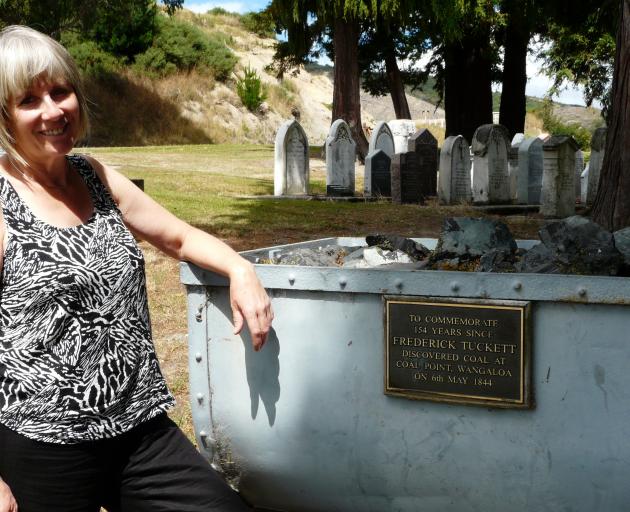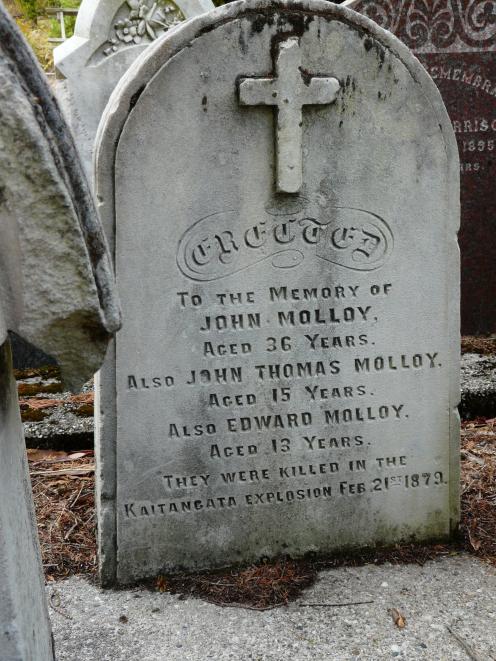

According to a first-person account in the Southern Reporter newspaper of the time, a ''fearful explosion'' occurred in the Kaitangata No1 Mine about 9.15am, leading to the deaths - the majority by suffocation - of 34 miners, men and boys.
Later it would be learnt that mine manager William Hodge's brother Archibald had entered a disused section of the workings with a naked flame in hand, sparking an accumulation of highly flammable, methane-rich ''firedamp'' gases, and causing the disaster.
The explosion was the first of its scale in New Zealand, and rapidly led to the institution of previously dormant laws surrounding what would now be termed health and safety regulations for coal mines nationwide.
In this way, improvements in working conditions for all miners emerged from the ''blood on the coal'' of their forebears, although this was likely little comfort to the 25 widows and more than 70 children left behind.

Kaitangata was founded and came to thrive upon mining from its earliest days of European settlement, and the many descendants of miners and retired modern-era miners who still call the sleepy South Otago township home are rightfully proud of their industrial past.
The 140th anniversary of the disaster will be marked by a series of events in the town running from February 21 to April 14, collectively entitled the Blood on the Coal Heritage Festival.
Local playwright and historian Denise Dent has explored the disaster for a new play she has written as a festival finale and, in the process, has revealed previously hidden details of the lives of those affected.
A tireless dig through the archives led Ms Dent to newspapers of the day; local history books; mining, governmental and legal documents relating to the disaster and its aftermath; and first person accounts and records of the consequences for the widows and children left behind.
She said it was those personal accounts of the lives of the families and those they had lost that brought the disaster to life for her, and led to the birth of her play Blood on the Coal.

''That proved to be an amazing resource, and fired my imagination.''
Responses to the trauma of the event ran the gamut from institutionalisation, to remarriage and long later lives.
The story of a Mrs Agnes Wilson was among those touching Ms Dent.
''Eight months after the disaster, Agnes ended up in Seacliff Asylum, where she was described as a 'wandering lunatic'. That in itself was a tragedy, but there she wasted away and died, unrecognisable, eight years later.''

''It's sad to think how she must have been affected by this tragedy to undergo that transformation.''
Among those who felt their new life in New Zealand had been blighted irreparably was Mrs Mary Molloy.

Further research had unearthed an 1883 passenger list from the British Queen steamer, with one ''Mrs Molloy'' included.
''I like to think she finally made it home to her family.''
Mrs Molloy's tale would run through the festival play, Ms Dent said.
''I wanted to get across how deeply affected the community was by the disaster; delve into who was to blame: owners, managers, or legislation; and, more generally, how the price of progress is paid by the working classes.''
The real tragedy of the disaster had been how unnecessary it was, she said.
''Legislation from 1874 existed to prevent this happening, but only became fully effective after the event, when changes were introduced within weeks. There's plenty here that will resonate with a modern audience.''
Casting was under way for the play, and Ms Dent encouraged locals to step up and take part.

''We're looking for four or more men and three boys in their mid-teens. It's a chance for people to relive the pasts of their ancestors.''
She hoped the play and a subsequent planned book drawing on her research would inspire Kaitangata residents to share more of their own family mining stories.
''There's plenty of history that tells the stories of the wealthy classes. But underpinning those stories was the day-to-day labour of the working classes. I want to share their voices.''
A full programme of events can be found on the Kaitangata Museum Facebook page.
Coal in Kaitangata
- May 6, 1844: Frederick Tuckett discovers coal at Coal Point, Kaitangata
- March, 1869: First Kaitangata coal mined
- 1873: Taratu Coal Mine opens; coal production extends in 1903
- 1875: Kaitangata Railway and Coal Coy formed
- 1876: Railway to Stirling opens
- June 19, 1876: First coal trucked to Dunedin
- February 21, 1879: Mine explosion at Kaitangata No 1 Mine
- 1887: Small Castle Hill Mine opens
- 1945: Wangaloa State Opencast Mine opens
- 1956: Lockington Underground Mine opens at Wangaloa
- Sept 30, 1970: Lockington Mine closes
- Present day: Kai Point Coal still in operation











